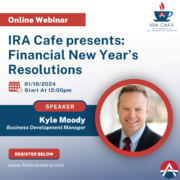Breaking the Self-Directed IRA Down into Easy Steps
For many people, the idea of a Self-Directed IRA is so complicated that it sounds intimidating. Self-Directed IRAs? Aren’t those for people with tons of money, the kind of people who can afford armies of accountants and lawyers? I will never be able to do any of that financial jiu-jitsu! But the truth is, Self-Directed IRAs can be surprisingly simple. In fact, for many self-employed individuals, an IRA can be the only way to move forward with retirement saving. And as you might expect of anything as popular as Self-Directed IRAs, the process isn’t nearly as intimidating as you might believe.
To help demystify that process, let’s break signing up for and funding an IRA into its component steps. You may find that it is much easier than you ever imagined.
Step One: Select the Type of Self-Directed IRA You Want
Here is a little secret-that’s-not-a-secret: there is not a “Self-Directed IRA.” What this term refers to is a list of possible retirement accounts that you can potentially self-direct. For example, there’s the Self-Directed Traditional IRA, the Self-Directed Roth IRA, a Self-Directed SEP-IRA, a Self-Directed SIMPLE IRA, a Self-Directed Solo 401(k)—well, you get the point. Choosing a Self-Directed IRA is the first step because you’ll want to make sure you have the structure in place that makes the most sense for your situation.
Do your homework here. We cannot recommend a rule of thumb account, of course, because we do not know your individual situation. But we can introduce you to the account types available and explain what they are. For more information on that, review the types of Self-Directed IRA accounts available.
Step Two: Fund Your Self-Directed IRA
Once you choose what type of account you would like to set up, it can be as easy as reaching out to a Self-Directed IRA administration firm like ours and saying you want to sign up. From there, we can help you with the paperwork necessary to make the IRA happen. But after that point, the next step is clear: you must get money into your IRA, or nothing will ever happen. There are typically three main types of funding you can use: transfers, rollovers, and contributions. Contributions are the most direct, but those are limited per year. Transfers and rollovers occur with previously existing accounts and can potentially put more funds into your IRA than you would be able to accomplish through contributions alone.
Step Three: Begin Investing
Now that you have a Self-Directed IRA with money in it, the next question is: where will you put that money? You can select from a wide range of potential assets, including real estate, promissory notes, precious metals—the list goes on and on. After that, you are free to make your own decisions. No, really. We are not a financial advisor here at American IRA, which means that you are in the driver’s seat. You can check out our paperwork for requesting certain transactions, such as submitting paperwork for making a real estate purchase. But we handle administration. The decisions are up to you.
Understanding how an IRA works can be one of the fastest ways to demystify the entire process. And once you see the steps above are plain and simple, you probably will not fear what an IRA can do. If anything, you might find yourself getting excited for the possibilities of a retirement account once you’re the one calling all the shots. But that’s not where your investing journey ends.
Interested in learning more about Self-Directed IRAs? Contact American IRA, LLC at 866-7500-IRA (472) for a free consultation. Download our free guides or visit us online at www.AmericanIRA.com.







